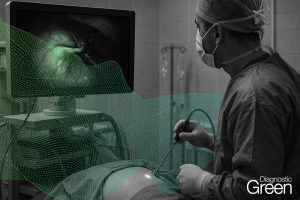Background: Indocyanine green fluorescence angiography (ICG-FA) in colorectal surgery allows changing the section line (CSL) based on objective evaluation of the vascular supply. The aim of this prospective study is to report our experience with CSL based on ICG-FA during colorectal surgery and to report risk factors influencing it.
Methods: From 2014 to 2023, all patients who underwent any colorectal surgical procedure with anastomosis and ICG-FA were enrolled. Patients for whom changing the section line based on ICG-FA was not necessary were included in group A, and patients for whom ICG-FA determined a CSL were included in group B.
Results: Four hundred consecutive patients underwent laparoscopic surgery, except for two. In 334 patients (group A, 83.5%), CSL based on ICG-FA did not occur, while CSL occurred in 66 patients (group B, 16.5%). In group B, median time from ICG injection and fluorescence visualization (TIFV) was statistically significantly longer than in group A (28.5 s versus 23 s, p = 0.003). Anastomotic leakage rate was 1.8% and 4.5% in group A and B, respectively, without a statistically significant difference. The multivariate logistic regression analysis identified age > 60 years and TIFV ≥ 20 s as independent risk factors for CSL.
Conclusions: Factors influencing the CSL are identified, which could be useful to determine the cases in which this technology should be mandatory and to consider when ICG is not available. These factors could also influence the decision-making process during surgery, such as using protective ileostomy.




